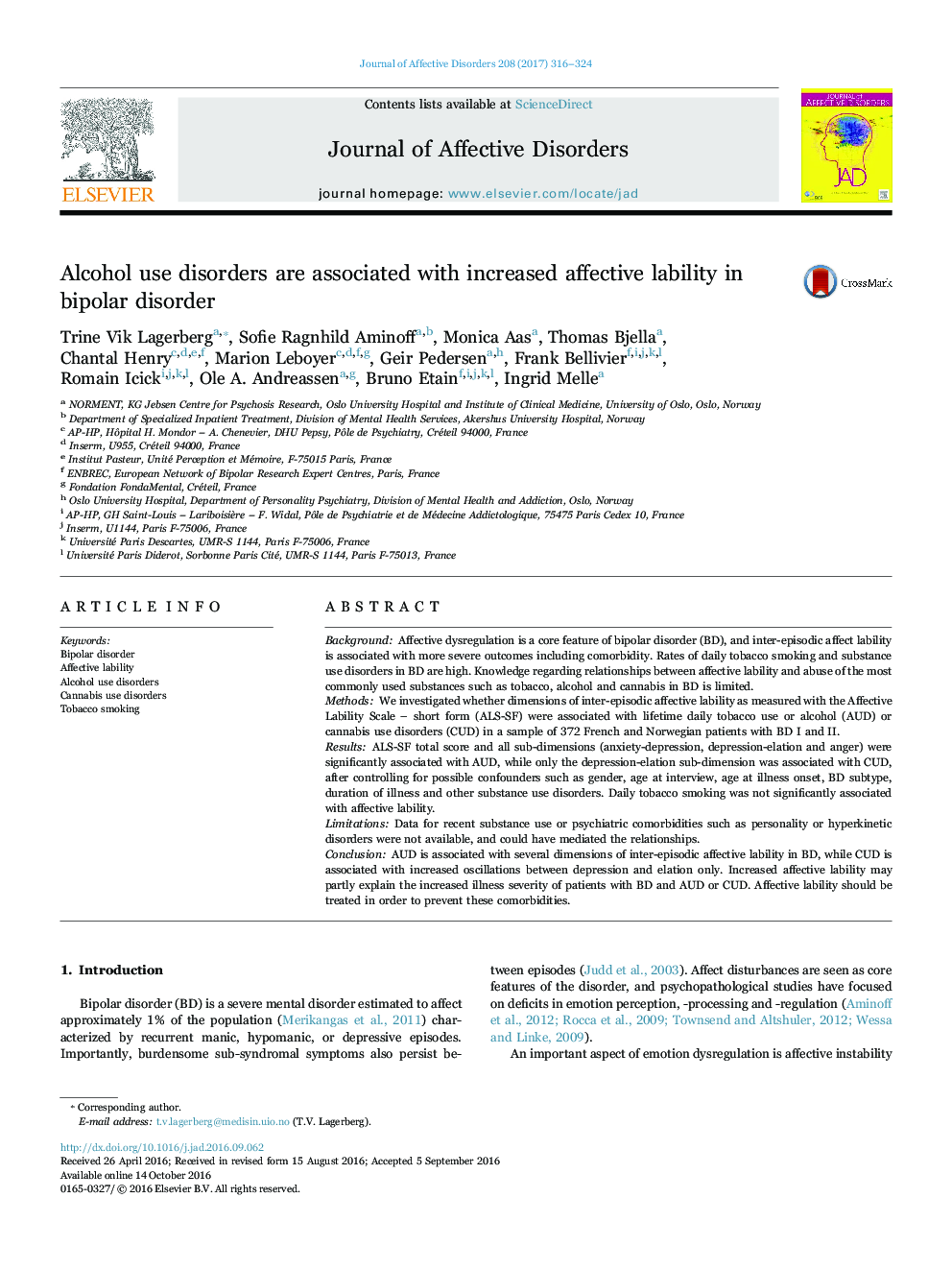| کد مقاله | کد نشریه | سال انتشار | مقاله انگلیسی | نسخه تمام متن |
|---|---|---|---|---|
| 5722093 | 1608117 | 2017 | 9 صفحه PDF | دانلود رایگان |
- Alcohol use disorder is associated with affective lability in bipolar disorder.
- This relationship was present for several sub-dimensions of affective lability.
- Cannabis use disorder was associated with oscillations between elation and depression.
- Potential confounding effects of tobacco smoking was properly controlled for.
- Causality between affective lability and alcohol abuse should be investigated.
BackgroundAffective dysregulation is a core feature of bipolar disorder (BD), and inter-episodic affect lability is associated with more severe outcomes including comorbidity. Rates of daily tobacco smoking and substance use disorders in BD are high. Knowledge regarding relationships between affective lability and abuse of the most commonly used substances such as tobacco, alcohol and cannabis in BD is limited.MethodsWe investigated whether dimensions of inter-episodic affective lability as measured with the Affective Lability Scale - short form (ALS-SF) were associated with lifetime daily tobacco use or alcohol (AUD) or cannabis use disorders (CUD) in a sample of 372 French and Norwegian patients with BD I and II.ResultsALS-SF total score and all sub-dimensions (anxiety-depression, depression-elation and anger) were significantly associated with AUD, while only the depression-elation sub-dimension was associated with CUD, after controlling for possible confounders such as gender, age at interview, age at illness onset, BD subtype, duration of illness and other substance use disorders. Daily tobacco smoking was not significantly associated with affective lability.LimitationsData for recent substance use or psychiatric comorbidities such as personality or hyperkinetic disorders were not available, and could have mediated the relationships.ConclusionAUD is associated with several dimensions of inter-episodic affective lability in BD, while CUD is associated with increased oscillations between depression and elation only. Increased affective lability may partly explain the increased illness severity of patients with BD and AUD or CUD. Affective lability should be treated in order to prevent these comorbidities.
Journal: Journal of Affective Disorders - Volume 208, 15 January 2017, Pages 316-324
